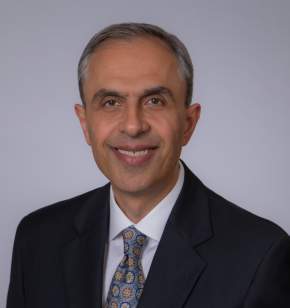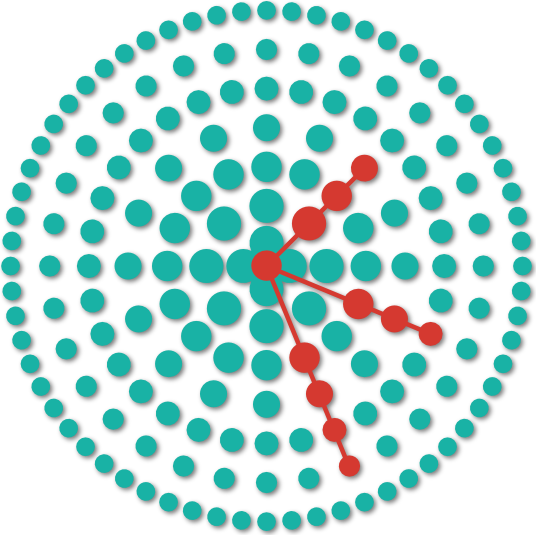Survival With Cavernous Malformation


Abnormalities in the blood vessels of the brain are known as vascular malformations. Cavernous malformations are a specific type of vascular abnormality characterized by a cluster of blood vessels that look like a raspberry. The walls of these vessels are abnormally leaky, making them prone to bleeding. Cavernous malformations are sometimes also referred to as cavernomas or cavernous angiomas.
These malformations are relatively rare, with an incidence in the general population of 0.3% to 0.5%, meaning that approximately 1 in 200 to 250 people have one or more of them. They can be sporadic, with one lesion, or familial/hereditary, with multiple lesions throughout the central nervous system.
A diagnosis of familial cavernous malformation is likely if a person has more than 3 lesions and a family history of seizures. Mutations in the KRIT1/CCM1, CCM2, and PDCD10/CCM3 genes are associated with the familial form of the condition. However, the symptoms can vary widely among family members.
A cavernous malformation can develop anywhere in the central nervous system, but they are found most commonly in one of the cerebral hemispheres and occasionally appear in a deeper brain structure, such as the brainstem or basal ganglia; Cavernous malformations are rarely found in the spinal cord. Symptoms and treatment options depend on the size and location of the cavernous malformation.
It is important to understand that cavernous malformations are not brain tumors, and they usually do not affect life expectancy. Cavernous malformations are rarely life-threatening.
Living With a Cavernous Malformation
Cavernous malformation is a rare condition that can have a significant effect on one's life, but with the right support and care, it is possible to manage its symptoms and maintain a good quality of life. The physical symptoms of this condition vary depending on the location and size of the malformation. Some people might not experience any symptoms, whereas others can experience headaches, seizures, weakness or numbness in a limb(s), difficulty speaking or understanding language, or vision changes, which can be frustrating and affect daily activities. Adjustments to daily routine and lifestyle, such as avoiding certain activities that can put you or others at risk, such as swimming or driving, might be necessary.
The emotional effects of a cavernous malformation are just as important as the physical symptoms. Coping with a chronic condition can be overwhelming and lead to feelings of sadness, anxiety, or depression. It is essential to seek support from family, friends, and/or a mental health professional. Connecting with others who have a cavernous malformation or a similar condition through support groups online or in person can also be helpful.
If you are pregnant or planning to become pregnant, you should inform your neurosurgeon so that he or she can change any prescribed antiepileptic and/or pain medications to those that are safe to use during pregnancy. The risk of bleeding associated with a cavernous malformation during pregnancy is extremely low, and vaginal delivery is safe if there has been no recent brain bleed. It is important to note that cavernous malformations do not usually shrink or disappear on their own and therefore require management.
Symptom Management
Dealing with symptoms caused by a cavernous malformation can be challenging, but there are several strategies that can improve quality of life and minimize its impact. Working with a healthcare professional experienced in treating cavernous malformations is essential for developing a personalized treatment plan. The following are some tips for managing symptoms:
- Medications—antiepileptic and/or pain medication might be prescribed to alleviate symptoms such as seizures or headaches. It is important to adhere to the prescribed medication regimen and discuss any side effects or concerns with your neurosurgeon.
- Surgery—depending on the location and size of the cavernous malformation, surgery to remove or reduce the size of the malformation might be an option. Discuss the risks and benefits of surgery with your neurosurgeon to determine if it is the right choice for you.
- Lifestyle modifications—lifestyle changes such as getting enough sleep and following a balanced diet can help manage symptoms. It is advisable to avoid alcohol and recreational drugs, because they can worsen symptoms or interact negatively with medication. Regular exercise or physical activity can also help improve overall health and reduce stress.
- Therapies—physical or occupational therapy might be suggested to help with any mobility or daily activity difficulties. Speech therapy can also be helpful if there are difficulties speaking or understanding spoken language.
- Support groups—joining a support group can provide emotional support and connect you with others who have a cavernous malformation.
- Stress-reduction techniques—managing stress can help your health overall and reduce the emotional burden of symptoms. Techniques such as meditation, deep breathing, or yoga can be useful in managing stress and risk of seizures.
- Follow-up care—regular appointments with your neurosurgeon are essential for monitoring the progress of the cavernous malformation and adjust treatment as necessary.
Working closely with your neurosurgeon to develop a personalized treatment plan that suits your needs is essential. By adhering to the recommended treatment plan and making lifestyle changes, you can improve your quality of life and manage the symptoms of cavernous malformation.
Why should you have your surgery with Dr. Cohen?
Dr. Cohen
- 7,500+ specialized surgeries performed by your chosen surgeon
- More personalized care
- Extensive experience = higher success rate and quicker recovery times
Major Health Centers
- No control over choosing the surgeon caring for you
- One-size-fits-all care
- Less specialization
For more reasons, please click here.
Recovery After Surgery
The typical recovery period after cavernous malformation surgery is around 6 weeks without complications, but your age and overall health, postsurgical care, and the location of the malformation can have an effect. If there are any neurological deficits after the surgery, physical rehabilitation might be needed to regain lost functions.
During the first week after surgery, you might experience pain, discomfort, and fatigue, and you should avoid strenuous activities such as lifting or exercise. Assistance with daily tasks such as cleaning and errands might be required. By the second to third week, you might feel much better and be able to resume some normal activities, but you may still need to return to the hospital for follow-up appointments. From weeks 3 to 6, you should notice a faster and more notable recovery, with less pain and fewer neurological issues. Your doctor might still recommend some activity restrictions, but you should be able to resume most daily routines by week 6 and beyond.
MRI scans or other follow-up checks may be recommended after week 6 to assess your recovery process. Regular communication with the doctors involved in your care is crucial for ensuring a full recovery.
Limitations of Surgery and Recovery
In most patients, the initial surgical treatment for a cavernous malformation cures the condition. The objective of surgery is to completely remove the cavernous malformation while preserving healthy surrounding tissues. Typically, an MRI scan will be conducted within 24 hours after the surgery to confirm the complete removal of the malformation.
If any fragments of the cavernous malformation remain, you might need to undergo another surgery to remove them and minimize the risk of future bleeding. Your doctor might also schedule follow-up MRI scans 1, 3, and 5 years after the surgery to monitor your recovery and check for any signs of the cavernous malformation re-emerging.
Hemorrhage (bleeding) and recurrence of the cavernous malformation are the most common long term surgical complications. Hemorrhage after surgery can result in a hemorrhagic stroke and progressive neurological damage, particularly if you have a history of bleeding or if the malformation is located in the brainstem. Other possible complications include headaches, weakness, sensory abnormalities, difficulty with walking, or other neurological impairments. However, these complications are generally temporary and often resolve with time. Physical rehabilitation can assist in restoring strength and function.
Although many patients report improvements in their symptoms after surgery, such as the resolution of seizures, some symptoms can persist. If this occurs, alternative treatment options, such as antiseizure medication, will be discussed.
Living with a cavernous malformation can be a difficult experience, but it is possible to find ways to manage the symptoms and maintain a good quality of life. With appropriate support and management, it is possible to continue pursuing your goals and aspirations and lead a happy life despite the challenges posed by the condition. It is crucial to keep in mind that every individual's experience with a cavernous malformation is distinct and that seeking out the appropriate support and care is essential for effectively managing the condition and maintaining a positive outlook.
Key Takeaways
- A cavernous malformation is an abnormal cluster of blood vessels in the brain that resembles a raspberry. The walls of these vessels are abnormally leaky, which makes them prone to bleeding.
- Cavernous malformations can result in physical and emotional burdens, but it is rarely life-threatening.
- Daily symptoms can be managed by using medications, leading a healthy lifestyle, and employing stress-reduction techniques.
- Recovery after surgery usually takes approximately 6 weeks.











